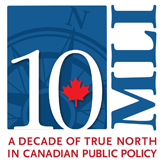
After a recent visit by Canadian Ambassador to China, Jennifer May, to the Xinjiang Uyghur Autonomous Region, the ambassador raised concerns over credible reports of systematic human rights violations occurring in Xinjiang affecting Uyghurs and other Muslim ethnic minorities. These concerns included those raised by UN experts and the UN Office of the High Commissioner for Human Rights. She further expressed Canada’s concerns over restrictions on Uyghur-language education and the practice of forcibly placing Uyghur children into residential schools.
The Chinese Embassy in Canada responded to Ambassador May’s concerns with a press release filled with misleading statements, omissions, false denials, and deflection.
We analyze all of these claims below:
Claim 1:
“The statement repeated the same old rhetoric, expressing so-called concerns based on fabricated rumors and reports with ulterior motives, without mentioning what Ambassador May really saw and heard in Xinjiang.”
Facts:
The international community, including Canada, bases its concerns on extensive, credible reports from multiple sources, including the United Nations, human rights organizations like Amnesty International and Human Rights Watch, and testimonies from Uyghurs themselves. These reports document widespread human rights abuses, including mass detentions, forced labor, and cultural suppression. The Chinese government’s controlled tours for diplomats are designed to present a sanitized view, not reflecting the realities faced by the Uyghur population.
Claim 2:
“Today, Xinjiang enjoys social stability, economic prosperity, ethnic unity, religious harmony, and people there live a decent life.”
Facts:
The claim of social stability and prosperity in Xinjiang overlooks the severe repression targeting the Uyghur people. Economic prosperity is unevenly distributed, often favoring Han Chinese settlers over Uyghurs. Religious practices are heavily monitored and restricted, contradicting claims of religious harmony.
Claim 3:
“Human rights of people of all ethnic groups, including their right to use and advance their own ethnic languages, are fully protected.”
Facts:
This statement is directly contradicted by multiple credible, independent, international reports of forced assimilation policies, including the banning of Uyghur language in schools and the destruction of Uyghur cultural sites. The Chinese government’s policies aim to eliminate Uyghur cultural identity, not protect it.
Claim 4:
“More than 4,300 foreign government officials, diplomatic envoys, religious figures, experts and scholars, journalists and foreign tourists have visited Xinjiang. All of them spoke highly of the remarkable progress in Xinjiang’s economic and social development.”
Facts:
The visits mentioned are highly orchestrated, with access strictly controlled by Chinese authorities. Independent access to Xinjiang is nearly impossible, and visitors are shown a carefully curated version of reality. The true situation in Xinjiang is starkly different from what is presented during these “Potemkin village” propaganda visits.
Claim 5:
“Canada has repeatedly made unwarranted remarks about other countries’ human rights situation, while turning a blind eye to its own racial issues.”
Facts:
Canada has faced its own challenges with racial discrimination and the treatment of Indigenous peoples in the past. However Canada has acknowledged these issues and is seeking to address them. Canada’s historic issues do not negate Canada’s responsibility to speak out against human rights abuses globally. Addressing domestic issues and advocating for international human rights are not mutually exclusive.
The Chinese government’s attempt to deflect criticism using “whataboutism” and pointing to problems in other countries is a tactic to avoid accountability.

